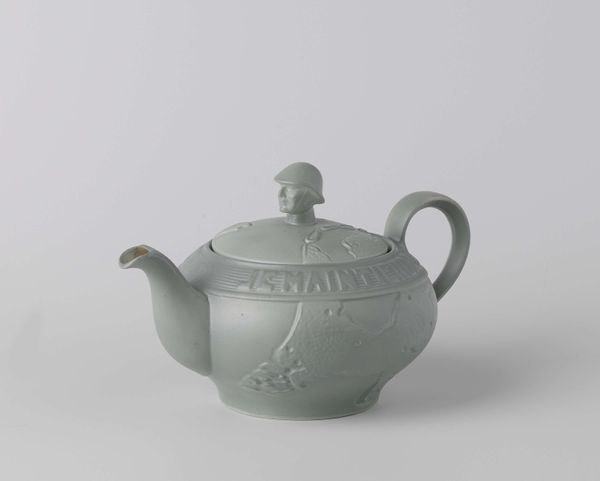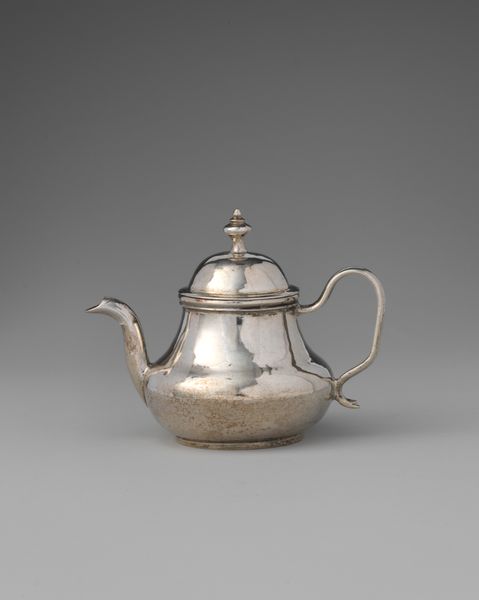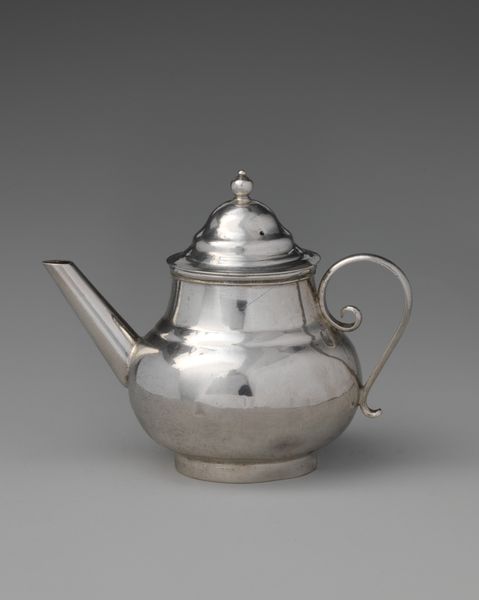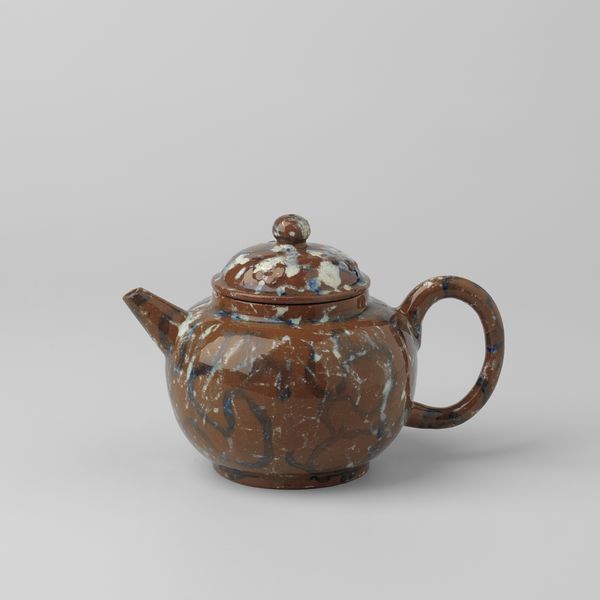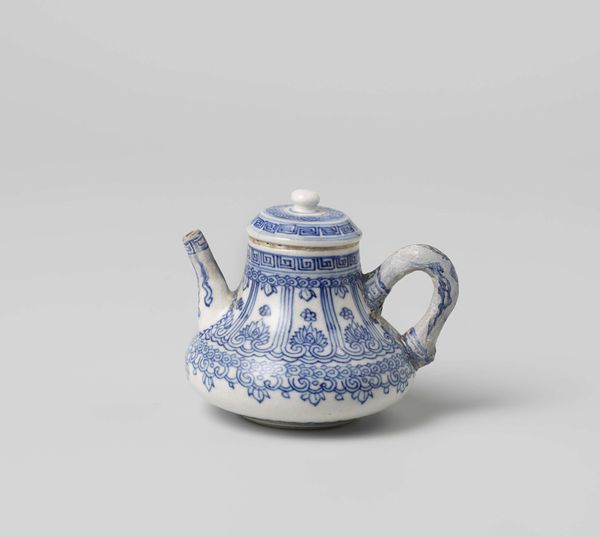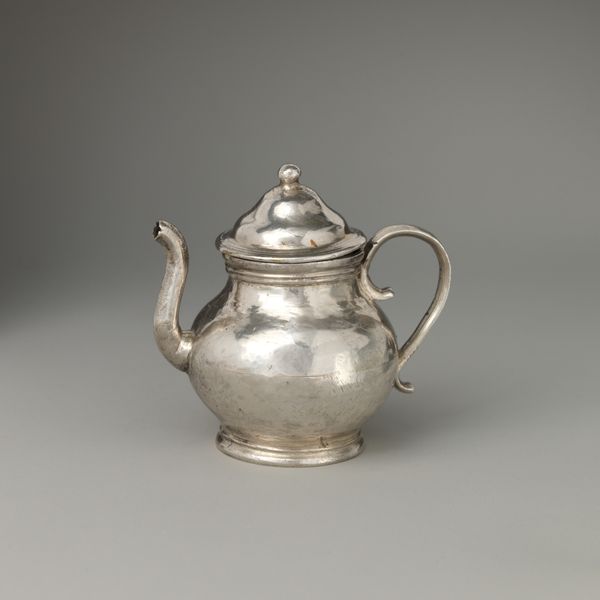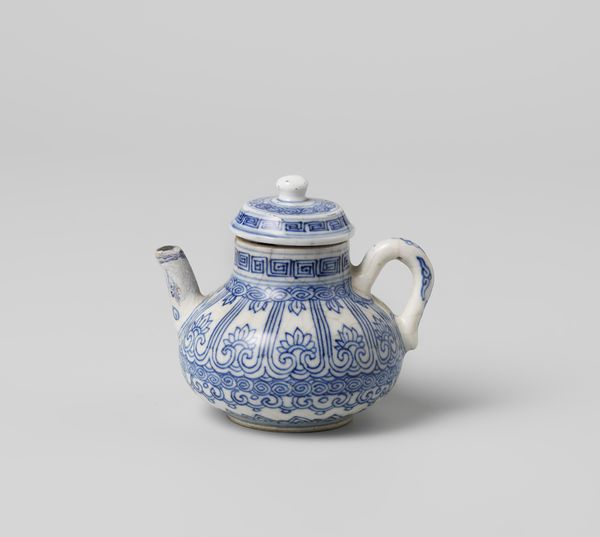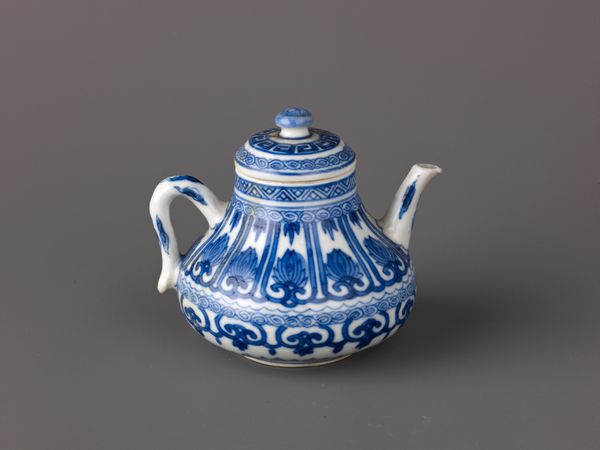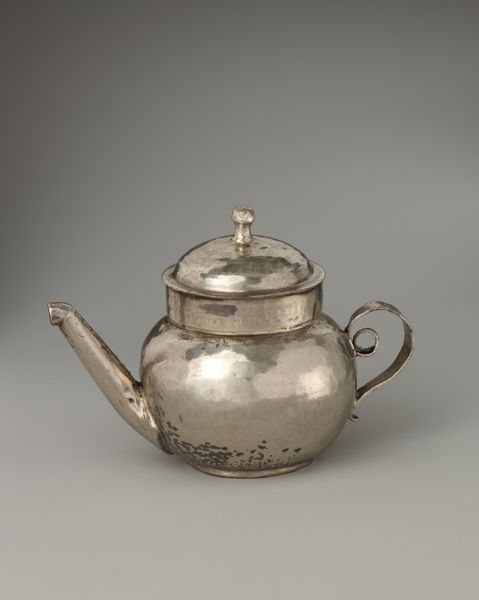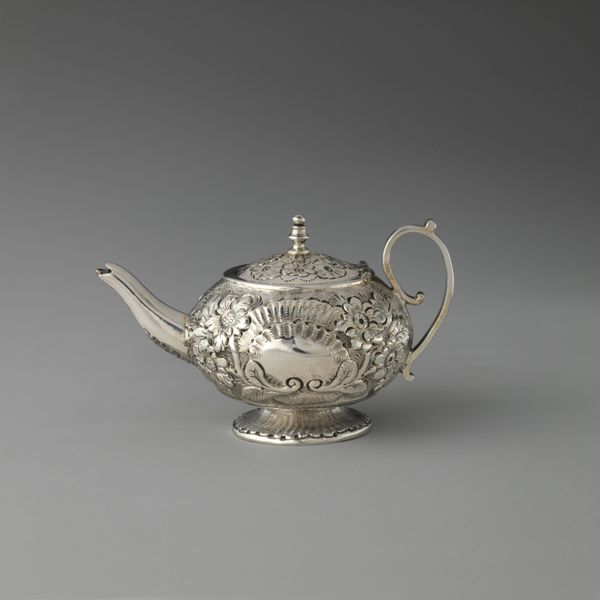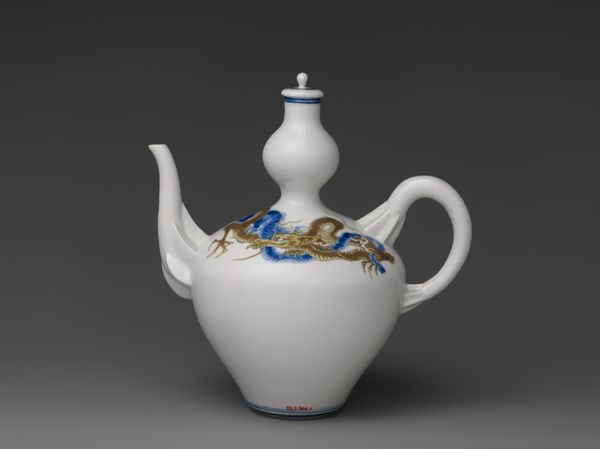
ceramic, earthenware
#
neoclacissism
#
ceramic
#
earthenware
#
decorative-art
Dimensions: height 13 cm, height 10.6 cm, depth 12.7 cm, width 22.2 cm, diameter 7.6 cm, diameter 8.5 cm, height 4.5 cm
Copyright: Rijks Museum: Open Domain
Curator: Here we have an earthenware lid, crafted sometime between 1790 and 1825, possibly for a teapot or some similar vessel. It comes from the workshop of Neale & Palmer in Hanley. What strikes you about it? Editor: Well, it’s somber, isn’t it? A muted darkness, almost gothic in its understatement. It feels like a prop from a very restrained haunted house film. Curator: Indeed. The monochromatic palette is definitely impactful. The choice of earthenware points towards a widespread availability, making the everyday beautiful, accessible. Editor: Everyday beauty produced how, though? Earthenware requires skilled labor to extract, to refine, to mold. And that small finial figure… someone took time, painstaking time, to sculpt that little detail. Who were they? And under what conditions were these wares made, bought, and sold? Curator: Those are excellent questions. Staffordshire, where Neale & Palmer operated, was indeed a hotbed of ceramic production, with all the social complexities that implies. We also see here, beneath that uniform black, the influence of neoclassicism. The molded details and even the little animal on top speak to a desire for order, balance... Editor: Though even within those ideals there is potential to question the social order. How could ordinary people interact with decorative art and utilitarian objects inspired by art's neoclassicism movement in 18th century Staffordshire? Was that a kind of statement on their economic standing and identity at the time? I imagine the relationship between art and industrialism created quite the environment. Curator: I can’t help thinking that there’s a curious dance between industry and craftsmanship going on with this piece, this attempt at refining something common with detail—but towards a greater, potentially disruptive end. It’s really a fascinating object, viewed in this context. Editor: A reminder that even the simplest object holds untold histories of labor and aspiration, really making us contemplate what makes an artifact truly speak to an era.
Comments
No comments
Be the first to comment and join the conversation on the ultimate creative platform.

